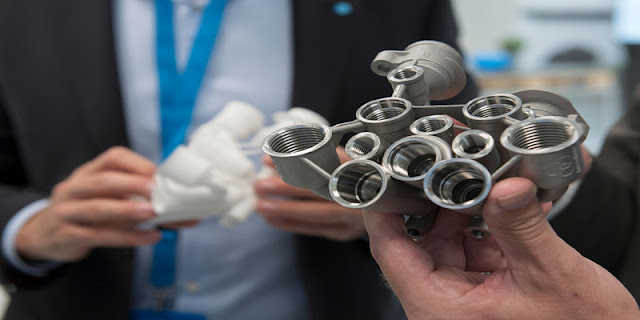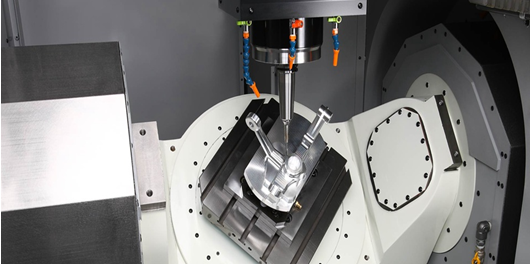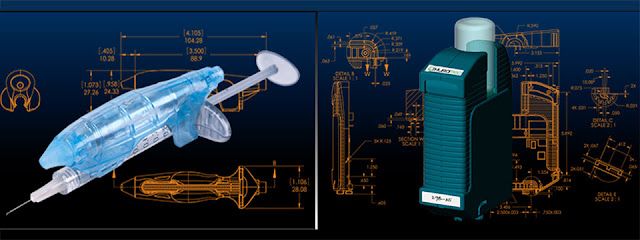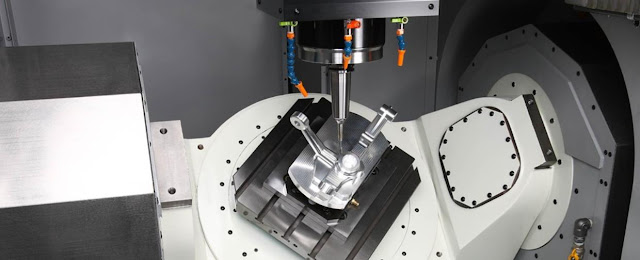Available additive manufacturing materials for production
What is additive manufacturing?
Additive Manufacturing (AM),known as 3D printing, combines
computer-aided design, material processing and molding technology, based on
digital model files, and uses specialized metal materials, non-metallic
materials, and medical biomaterials through software and numerical control
systems.According to extrusion, sintering, melting, photo-curing, spraying,
etc.,layer by layer, to create a manufacturing technology for physical objects.
Compared with the traditional processing mode of raw material removal-cutting
and assembly, it is a kind of "bottom-up" manufacturing method by
material accumulation, from scratch. This has made it possible to manufacture
complex structural parts that were previously constrained by traditional
manufacturing methods and that could not be realized.
Additive manufacturing of metal materials
Early
additive manufacturing techniques were primarily prototyped for rapid response
to product designs, including resins and plastics. As the market demand
continues to increase, additive manufacturing technology can not only meet the
appearance requirements, but must also gradually shift to the manufacturing
functional parts, thereby increasing the research on metal materials.
1. Titanium
alloy
Titanium alloy has the characteristics of
high strength, good corrosion resistance and excellent high temperature
mechanical properties. It is the strongest and lightest material in 3D
printing. It is used in a process called direct metal laser sintering. This
metal is mainly used in high-tech fields such as space exploration, aviation
and medical fields. However, high processing costs and long lead times limit
the scope of application. In particular, the aerospace and biomedical fields
with customized requirements highlight the drawbacks of traditional processing
methods. Titanium alloy is the first alloy material to be widely studied and
applied in additive manufacturing technology.
Main features:
It provides greater complexity and
resolution in the design.
It provides precise design for industrial
designers.
It has average surface roughness.
Titanium is also biocompatible and
corrosion resistant.
2. Steel
Steel
is the largest branch of alloy material. The diversity of steel composition,
morphology and preparation process has made it an extraordinary place in
traditional manufacturing. In the history of additive manufacturing technology,
steel is also an important material widely used in forming research, and can be
subdivided into three categories: stainless steel, high-strength steel and die
steel. 304 and 316 austenitic stainless steel powders (and their low carbon
steel grades) are the first stainless steel materials developed for laser
forming research and are now the typical processing materials in the additive
manufacturing market due to the strength and detail of stainless steel.
Important, so it is ideal for miniature models, bolts and key chains.
Main
features:
Steel
can be heat treated to increase strength and hardness.
It
has good high strength applications.
High
corrosion resistance.
3. Aluminum
alloy
Aluminum
alloy has low melting point, relatively small temperature gradient in the rapid
melting process, and the formed parts are not easy to deform and crack, which
is generally applicable to SLS and SLM processes.When aluminum is used, the
fine details can be up to 25 microns and the wall thickness can be up to 50
microns.Parts usually have a textured matt surface that distinguishes them from
conventional milling aluminum parts.Because of its light weight, 3d-printed
aluminum is used in car and racing parts.
Main
features:
Excellent
physical, chemical and mechanical properties.
It
has good corrosion resistance.
Additive manufacturing of polymer materials
1.
ABS
Polymer wire is mainly suitable for FDM
technology. Currently, it mainly includes PLA, ABS, PC, PPSF, PETG, etc.ABS is
the most commonly used thermoplastic engineering plastics in FDM due to its
excellent insulation, corrosion resistance and low temperature resistance.ABS
has the advantages of easy surface coloring, high impact resistance, high
strength and good toughness.To create a 3D printed object using ABS, the
filament must be heated to a relatively high temperature of 230-250 c. The high
melting point of ABS makes the object relatively warped and crack
resistant.This makes ABS an ideal choice for making certain cases and other
end-use components.ABS is also used for rapid machining and creating conceptual
models.But there are some shortcomings: the products are easy to shrink
deformation, surface prone to layer peeling and warping phenomenon.
2. Photosensitive resin
Photosensitive resin is a kind of polymer
material which can be cured by uv irradiation at a certain wavelength.In recent
years, additive manufacturing technology is booming, and photosensitive resin
is gradually entering the mass market.Photosensitive resin has been widely used
in SLA, DLP, 3DP and other forming technologies.Compared with the general
curing materials, the photosensitive resin has good surface drying performance,
the surface of the molding is smooth and clean, the product resolution is high,
the detail display is excellent, the quality even exceeds the injection molding
products.These outstanding advantages make it the preferred material for
high-end and artistic 3D printing products.However, at present, the cost of
photosensitive resin is still on the high side, and the mechanical strength,
heat resistance and weather resistance are mostly lower than the engineering
plastic consumables used in FDM, which affects the application range of
materials to a certain extent.
3.Nylon
High molecular powder is widely used in SLS
molding due to its low sintering energy, simple sintering process and good
prototype quality.SLS molding requires polymer powder to have the
characteristics of low agglomeration temperature, shrinking shrinkage, low
internal stress, high strength and good fluidity.At present, the common polymer
powder is polystyrene, nylon, nylon and glass microsphere mixture,
polycarbonate, polypropylene, wax powder and so on.Nylon is a full-density
material, the manufactured workpiece has high strength, elasticity and high
tolerance, suitable for tight fitting and various functional tests, such as fan
housing under high temperature operation test, impact and fall test.It also has
the advantages of heat resistance, low friction coefficient and wear
resistance.The disadvantage is large water absorption, affect the size
stability and electrical properties, fiber reinforced resin can reduce the
water absorption rate, so that it can work at high temperature, high humidity.
Concluding Remarks
With
the development of additive manufacturing, increasing research and development
of raw materials is a topic. Especially in the research and development and
application of new materials, according to the characteristics of additive
manufacturing, combined with the market application of various requirements,
vigorously develop new raw materials, additive manufacturing materials will
continue to improve the quality of the development direction.








Comments
Post a Comment